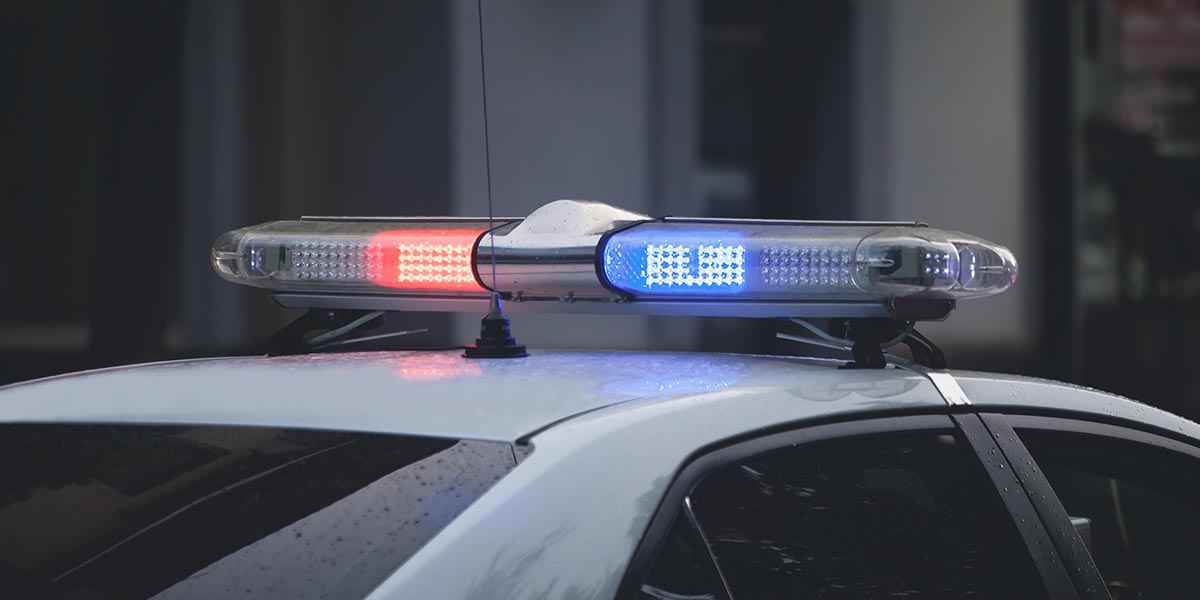What is distracted driving?
According to the National Center for Statistics and Analysis March 2020 driver report, 2,841 people were killed in a motor vehicle crash involving distracted drivers. Mobile technology devices and systems for law enforcement officers can present a risk of distraction and can lead to an increase in the risk of motor vehicle accidents, especially under stressful conditions. Distracted driving is nothing new and in fact it continues to present a significant area of risk to address. How big is the distracted driving problem? In everyday life, we may get distracted or take away our attention from the driving task for so many reasons. A cell phone rings that we think needs to be answered, a text message that we think needs to be read or responded to, a drink spills from its holder, or something slides from the seat to the floor. Distractions are everywhere. A NHTSA 100 car naturalistic driving study conducted in 2006, showed that text messages on cell phones or mobile data terminals increases the chance of being involved in a crash over 23 times.
Driving can be an essential function of being a law enforcement. The distractions faced while driving on duty are many and can present significant risk to the safety of the officers and others. Many distractions are considered to be part of the job. In addition to activities undertaken by the “every day” drivers, law enforcement officers may engage in additional, job-related types of multi-tasking that can divert their attention away from driving, such as: scanning approaching traffic and the roadside for suspicious behaviors, entering queries into the mobile data terminal, recording the location of a call for service or the description of a wanted person or vehicle, activating emergency equipment, talking on the police radio, and vehicle equipment/technology interaction, to name a few.
Law enforcement leaders throughout the industry have continuously pointed out the importance of reducing the risk of injuries and fatalities in and around police vehicle operations. Reducing distractions and the impact of distractions as much as possible is their goal.
Policing is an inherently dangerous job and one of the primary exposures to injury and death involves motor vehicles. According to the National Law Enforcement Officers Memorial Fund Research Bulletin in 2013, law enforcement officers are four times more likely to be involved in a crash than a civilian motorist.
Three types of distractions commonly impact driving behavior: visual distractions (taking one’s eyes off the road), manual distractions (taking one’s hands off the wheel) and cognitive distractions (taking one’s mind off the basic task of driving). Think about when you text a message or enter data into a mobile data terminal. You incorporate all three types of distractions during this activity. Our brains are not good at multi-tasking and in this case, applying the attention to the road that may be necessary to prevent an accident.
What might present distraction while officers drive?
There is a wide variety of things which can distract officers while driving. The following are things to consider when thinking about development of Standard Operating Procedures or best practices or when training officers. This list contains just some of the things which could distract an officer:
- Officers using cell phones either for business and or personal use.
- Driver cockpit design that requires reaching for tools or objects in the vehicle.
- Mobile data terminals interaction.
- Interactions with laptops.
- Navigation systems, audio and video systems, police radio communications emergency and non-emergency.
- Activating emergency equipment.
What are some thoughts in driver work station designs?
Unfortunately, there is no current standard for the optimal positioning, placement and usage of in vehicle equipment, which may include Mobile Data Terminals, communications equipment, radar equipment, etc. Some things to consider are: Who sets up the equipment for your fleet of vehicles? How does information get to the officer while driving? What equipment goes into the vehicles visual/audio design? How is the equipment placed and have best practices for usage been developed? Is there a place for everything and is everything in its place?
Part of work station design is to select equipment and analyze if the equipment is necessary and the benefit of utilizing new technologies. Then look at the placement keeping in mind ergonomics, safety, usage, officer and dispatch interactions.
What in-vehicle new technology is being used, for example, lane departure warning, crash-imminent braking, forward collision warning, rear-view cameras, are feasible means by which to help mitigate distracted driving crashes. Having these collision mitigation systems installed in police vehicles can direct drivers’ awareness to relevant events of interest and simultaneously can offer drivers feedback regarding potential collisions. Similarly, these types of crash awareness applications in vehicles already are beginning to help prevent crashes that occur because of distraction, fatigue, and inattention. Consideration should be given to the selection, purchase and use of new technologies to deter distracted driving behaviors for example crash warning systems, MDT vehicle interface, telematics, etc. Recognition of interior of police vehicles as “cockpits” can help focus the design. Also, disconnect and/or remove distracting devices and options that have little use on patrols.
Then you should give attention to safe placement and or securement of mobile data, communications and other equipment to deter in-vehicle injury. Develop approved work methods for officers with interaction with mobile technology and communication operations while operating a motor vehicle.
*The views and opinions expressed in the Public Risk Management Association (PRIMA) blogs are those of each respective author. The views and opinions do not necessarily reflect the official policy or position of PRIMA.*

By: Scott Durbin
Transportaion Specialist, Travelers/Northland Insurance
Scott has been head of fleet risk control for Travelers/Northland Insurance since 2015. Prior to that, he was an Indiana State Trooper for 30 years. Scott also spent 15 years in the Commercial Motor Vehicle Division. In his current role, Scott assists customers with fleet risk control to mitigate their risk.



